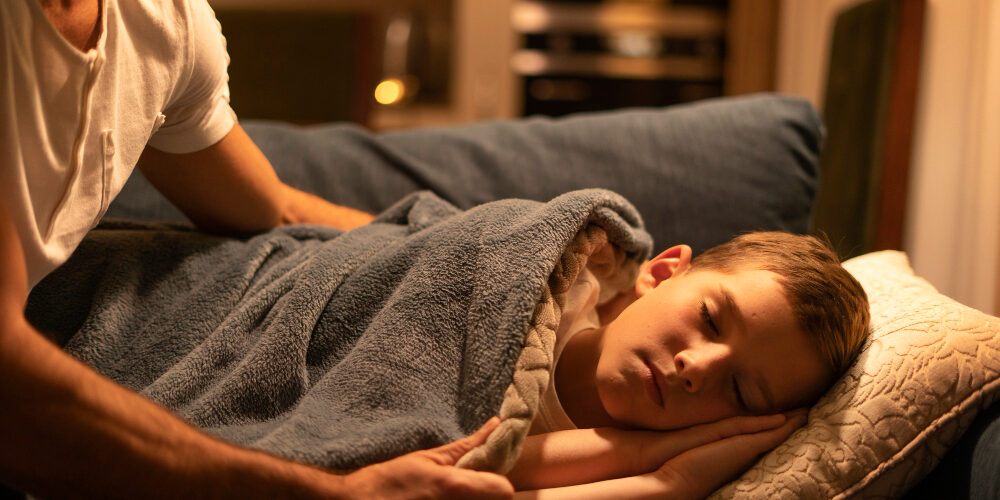There’s no doubt that getting enough sleep is crucial for children’s well-being. Disrupted sleep in children may lead to health, behavioral, and development issues. When children don’t get a good night’s sleep (quality and quantity), they become irritable and fatigued and usually face attention, learning, and behavior issues. Moreover, poor sleep in children can negatively affect a child’s growth, immune system, and blood sugar levels.
Therefore, if you are a parent, continue reading this article to find out everything you need about pediatric sleep disorders and sleep problems in children.
Causes of Pediatric Sleep Disorders
The causes of some common sleep disorders are similar in both children and adults. For instance, obesity is one of the main causes of obstructive sleep apnea, a sleep disorder characterized by breathing interruptions during sleep, in people of all ages.
Furthermore, some sleep disorders, like restless legs syndrome, may also have a genetic predisposition. And, anxiety disorders are also a major risk factor for sleep problems in children and adults.
On the other hand, specific daily habits could also lead to sleep-related problems. For example, insomnia in children aged 5 or below is typically caused by following an inconsistent bedtime routine.
Types of Pediatric Sleep Disorders
Childhood Insomnia
Insomnia is undoubtedly one of the most common sleep disorders. Precisely speaking, 20% to 30% of children suffer from insomnia (Bruni & Novelli, 2010). The disorder is characterized by difficulty falling and/or staying asleep for at least three days a week. Similarly, children refuse to go to bed without the help of a parent or an object such as a toy or blanket.
Delayed Sleep Phase Syndrome
Another common sleep disorder in children/teens is delayed sleep phase syndrome, also referred to as ‘sleepy teen’ syndrome. It is basically a shift in the biological clock, i.e., the circadian rhythm, that happens in late childhood or early adolescence. Children with the disorder fall asleep two or more hours past their typical bedtime and thus are unable to wake up early.
Hypersomnia
Among the common sleep disorders in children is hypersomnia which results in excessive daytime sleepiness. Narcolepsy, a neurological condition characterized by daytime dozing, loss of muscle control or cataplexy, and hallucinations upon falling asleep or waking, disrupted nighttime sleep and sleep paralysis are common features of the disorder. Next, insomnia, delayed sleep phase syndrome or obstructive sleep apnea are also associated with hypersomnia.
Parasomnias
Younger children tend to have parasomnias which are actually undesirable physical experiences or events. Sleepwalking, sleep terrors, or awakening in a confused state are one of the most common parasomnias in children that occur during awakening from non-REM sleep whereas vivid nightmares occur during REM sleep.
Movement Disorders
Restless legs syndrome and periodic limb movements of sleep are common sleep problems in children that fall under the movement disorders umbrella. These are neurological conditions that result in an overwhelming urge to move your limbs or an unpleasant sensation in the legs. Symptoms worsen at night and thus disrupt your child’s sleep.
Obstructive Sleep Apnea
Last but not least, obstructive sleep apnea causes frequent breathing interruptions and awakenings throughout the night. It is certainly one of the most common pediatric sleep disorders in children with enlarged tonsils or adenoids or those with a cleft lip and palate. What’s more, it could also affect children with muscular dystrophy or other neuromuscular disorders.
The bottom line is, occasional poor child sleep isn’t serious. But, if your child struggles to get a good night’s sleep for quite some time or often, ensure you consult a pediatric sleep disorders specialist.
References
Bruni, O., & Novelli, L. (2010, September 27). Sleep disorders in children. BMJ clinical evidence. https://www.ncbi.nlm.nih.gov/pmc/articles/PMC3217667/







